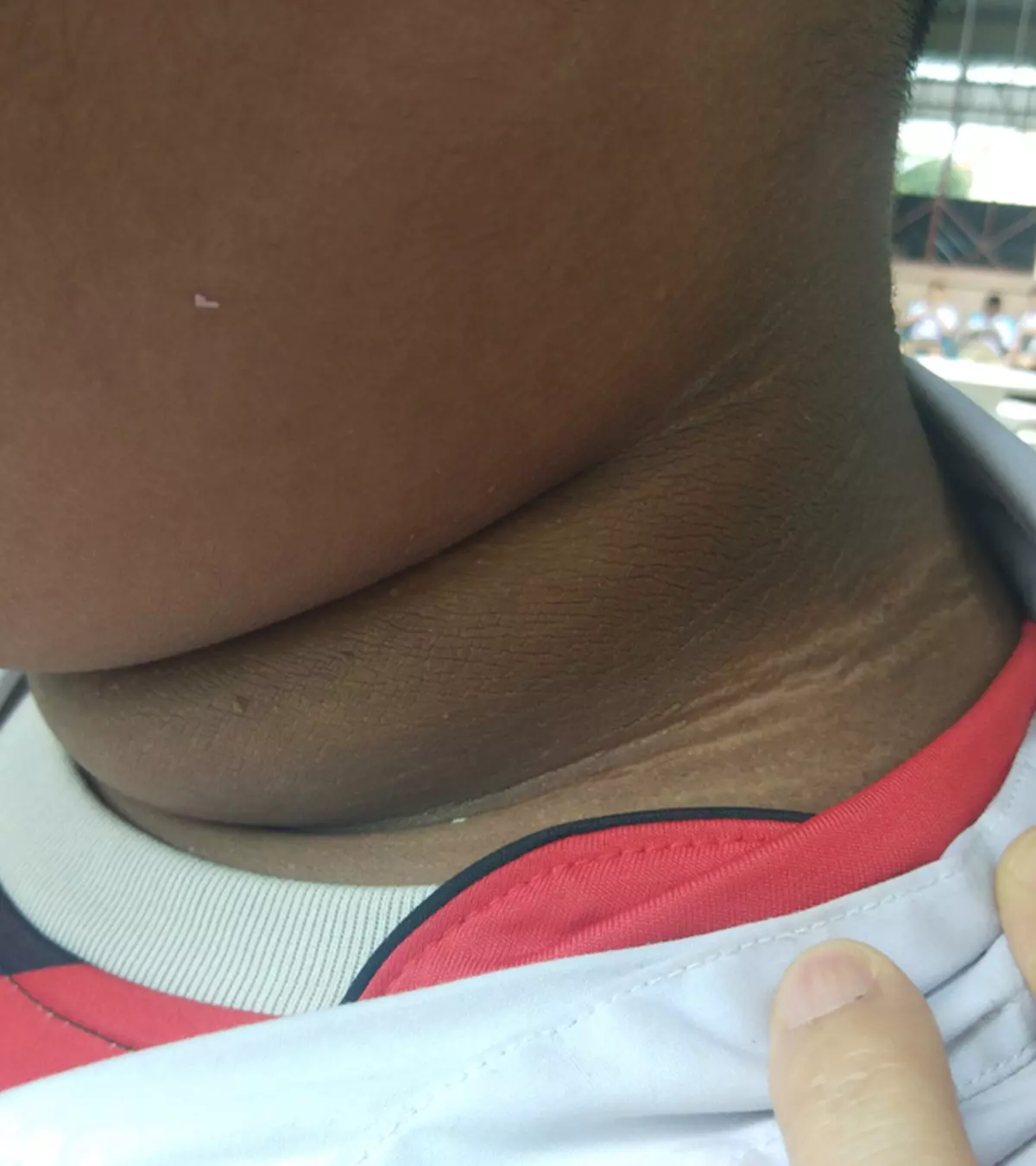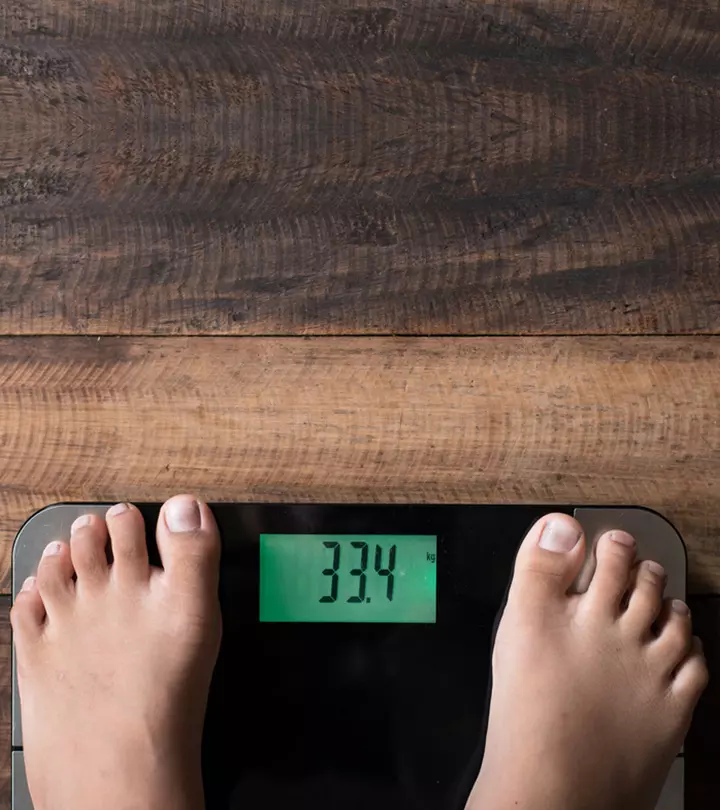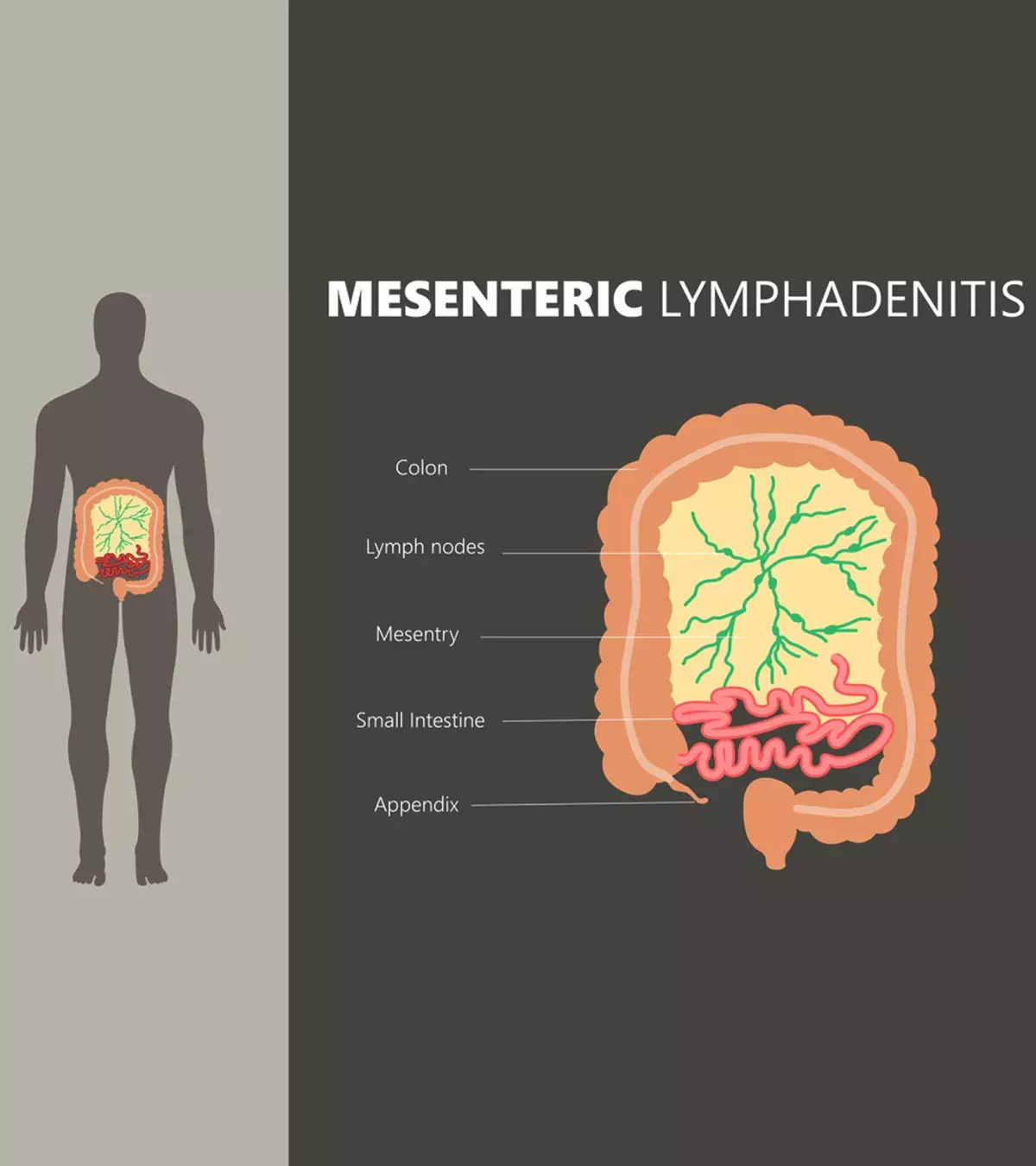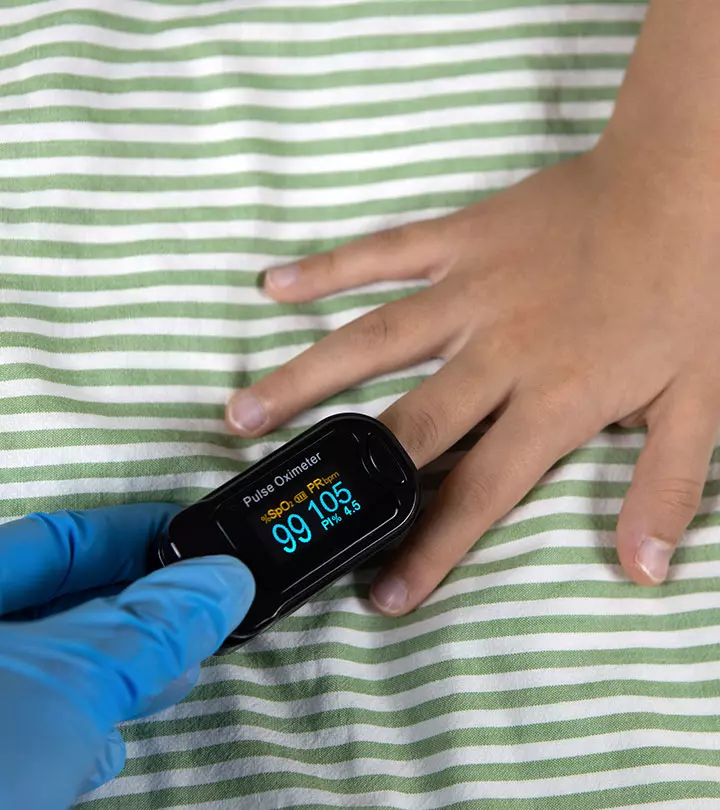
Image: Shutterstock
Respiratory rate is defined as the average number of breaths per minute. It is important to know about the respiratory rate in children to ensure the proper functioning of their lungs. The respiratory rate might vary depending upon age and various factors, such as physical activity, the body’s temperature, blood pressure, and level of electrolytesiMinerals present in blood and bodily fluids that carry an electric charge and are vital for essential body functions. in the body. The respiratory rate is a vital sign that indicates the proper functioning of the lungs, and thus, it is important to monitor it (1). Read on to know more about the normal respiratory rate in children, factors that alter it, and when to be concerned.

Key Pointers
- Respiratory rate in children may be measured by counting the number of rises and falls of the chest or using a respiratory sensor.
- High respiration rate may be due to dehydration or fever, while low respiration rate may be due to brain injury or hypothermia.
- Consult a doctor if you notice symptoms such as increased heart rate, cyanosis, or flared nostrils in children.
Normal Respiratory Rate For Children
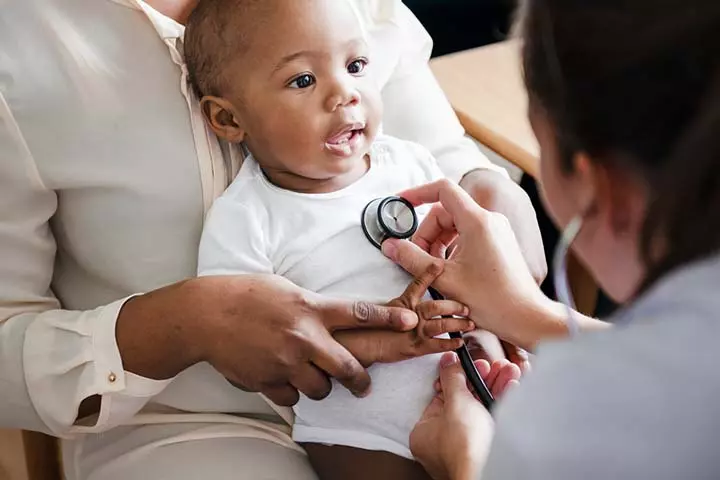
The table illustrates the normal ranges of the respiratory rate of children (2).
| Age | Respiratory Rate (breaths/min) |
| Infant (birth-1year) | 30-60 |
| Toddler (1-3 years) | 24-40 |
| Preschooler (3-6 years) | 22-34 |
| School-Aged Child (6-12 years) | 18-30 |
| Adolescent (12-18 years) | 12-16 |
Source: The University of Iowa and Stead Family Children’s Hospital
 Did you know?
Did you know?Measuring Respiratory Rate In Children
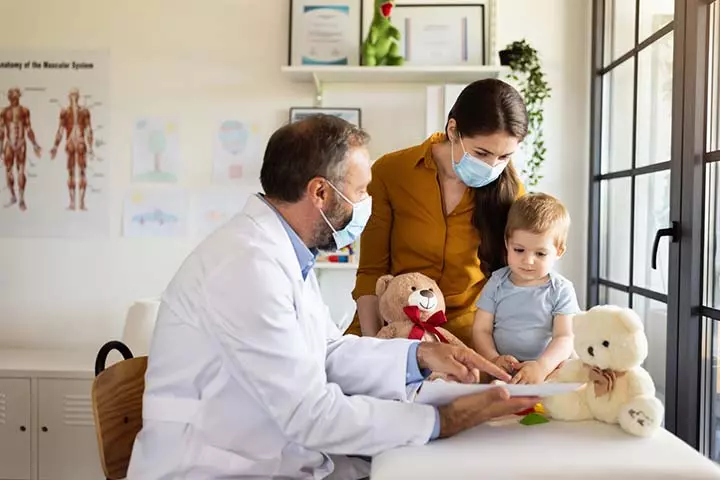
Measuring the respiratory rate in children is an easy task as it can be done using observational cues. The rise in the chest indicates inhalation, while a fall signifies exhalation. Therefore, you would measure one rise and one fall of the chest as one complete respiratory cycle. Here are the steps to follow (3).
- Ensure your child sits in an upright position
- Set your timer to one minute
- Start the timer and note down the number of chest wall movements
- After a minute, compare the count with the standard chart
Do not conduct the test after any strenuous activity to avoid any discrepancies in the count. Similarly, do not let your child know that they’re under observation as they may consciously alter their breath in such observational or clinical settings. Alternatively, you may use a respiratory sensor to avoid any mistakes.
 Health fact
Health factReasons For Altered Respiratory Rate In Children
Irregular breathing is when a child’s breathing rate is higher or lower than the acceptable ranges for their age. John Landry, a registered respiratory therapist from Memphis, Tennessee, says, “The ideal respiratory rate varies depending on the individual and their age, but generally, a respiratory rate that is too high or too low can indicate a problem. A high respiratory rate can signify respiratory infection or other conditions, while a low respiratory rate can indicate a problem with the person’s lung function or a side effect of certain medications.”
The reasons may include the following (4) (5):
1. High respiration rate
- Dehydration: Tachypnea (abnormally fast, shallow breathing) is a sign of severe dehydration among children (6).
- Respiratory illnesses: Any underlying lung conditions could result in an increased respiration rate. Asthma, obstructive pulmonary diseaseiA group of lung diseases that causes airflow obstruction leading to difficulty breathing due to damaged airways and lung tissue , pneumonia, emphysemaiA chronic disease of the lungs resulting in damaged air sacs (alveoli). , or other lung infections could be the reasons.
Milton Randle from Houston shares about his asthma journey during his childhood. Pondering upon the day when he found out dust is bad for his condition, he says, “On a summer Friday afternoon, after helping with an Ebenezer Baptist church clean-up project, I got a good dose of dust from cleaning the large rug in the Sunday School room. It was the first time I made the association with dust as a factor of my affliction…We rolled up the rug, lifted it and carried it outside to clean it. Wafts of dry dust floated up and surrounded us all, invading our eyes, noses, mouths and hair (My lungs seem to constrict now just a bit thinking about it!). I felt the symptoms come on gradually; my breathing became more and more difficult as the hours passed, until I was overcome with the need to go lie down. I became mindful of dust exposure from then on (i).”
- Fever: It is the most common cause of increased respiration rate in children. This increase in breathing rate is a part of the body’s mechanism to get rid of the excess body heat (7).
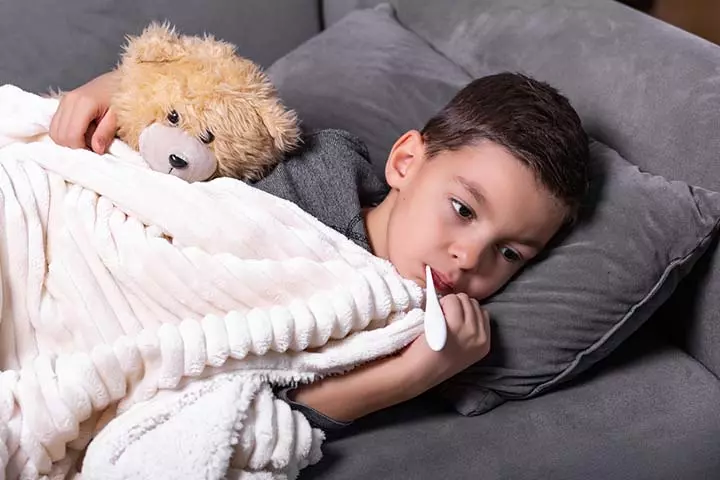
- Anxiety: According to the Morbidity and Mortality Weekly Report by the CDC, approximately 9.8% of children between 3-17 years were diagnosed with anxiety disorders (26). Panic attacks may cause a child to hyperventilateiCondition in which one breath at an abnormally fast rate. . This fast breathing rate would recede as the child calms down from the anxiety attack (8).
- Heart conditions: Heart and lungs work in conjunction. Hence, any cardiovascular health issues that affect the pumping of blood may affect the lungs eventually. The lungs may compensate for this decreased heart function by increasing the respiration rate.
 Health fact
Health fact2. Low respiration rate
- Overdosage: Certain narcotics, especially opioidsiA class of drugs that are used for relieving pain and as an illegal psychotic drug. prescribed for pain management for children, may affect the respiratory rate. An overdose of opioids could result in respiratory depression (9) (10).
- Obstructive sleep apnea: Pediatric obstructive sleep apnea is a sleeping disorder occurring due to an obstruction in the airway during sleep. In this condition, the child may show decreased or frequent pauses in breathing while asleep (11).
- Brain injury: Since the brain and lungs share a reciprocal relationship, respiratory dysfunction is a common complication of a brain injury (12).
- Hypothermia: Prolonged exposure to cold environments can cause a drop in body temperature, resulting in slower heart rate and breathing.
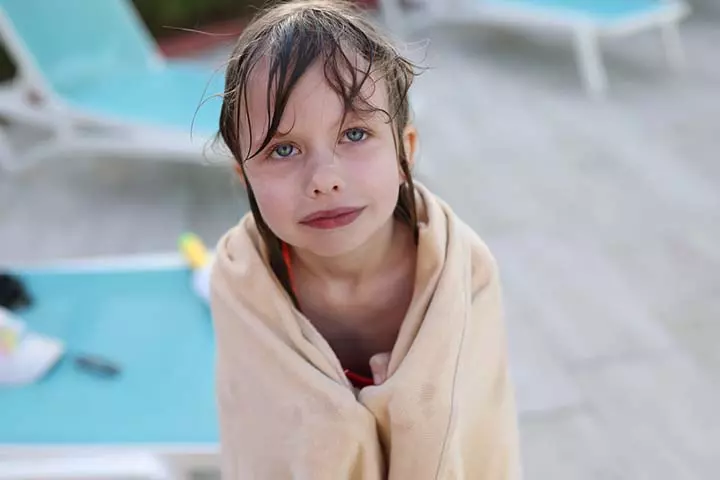
Metabolic disorders, such as hyperthyroidismiA condition caused by the overproduction of the thyroxine hormone resulting in weight loss, sweating, irregular heartbeat, etc. or hypothyroidismiA condition caused by the lack of thyroxine hormone in the thyroid glands. , may affect breathing patterns, too. While hypothyroidism decreases the respiratory rate, hyperthyroidism increases it (13). Altered respiratory rates could have benign causes, too. For example, an increased respiratory rate after intense physical activity is common.
When To See A Doctor
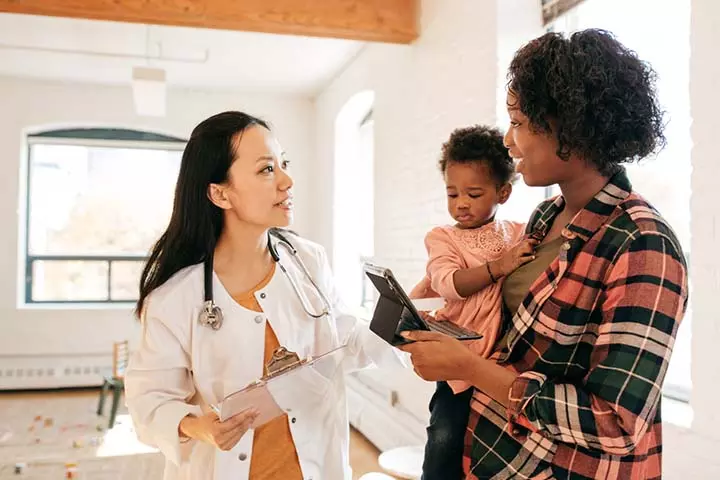
“Parents should be concerned about their child’s respiratory rate if it is consistently above the normal range for their age and if they are experiencing other symptoms such as difficulty breathing, chest pain, or cyanosis (bluish color of the lips or face),” opines Landry.
A breathing rate of more than 40 breaths per minute for a child of 1-12 years or more than 20 breaths for a child older than 12 years indicates irregular breathing patterns. Fewer than 12 breaths per minute could also be a sign of a problem.
Erratic respiration rate due to a problem is mostly accompanied by other signs of respiratory distress. It may help parents determine if the change in respiration rate is normal or due to an underlying condition. Below are some of the notable signs of respiratory distress in children (14) (15) (16):
- Increased heart rate: A rapid heart rate in children could be observed with a decrease in oxygen levels in the body.
- Stridor: A high-pitched, wheezing sound that is audible every time the child tries to inhale. It could be an indication of an obstructed airway.
- Blue color change (Cyanosis): If the color of the skin is turning blue, it is an indication that the body isn’t receiving sufficient oxygen. This blue color would be more evident near the mouth, inside of lips, and nails.
- Grunting: A grunting sound paired with deep breaths indicates respiratory trouble.
- Use of accessory muscle: The muscles of the neck appear strained during inhalation.
- Flared nostrils: Nostrils open wide during each inhalation if the child is facing issues in breathing.
- Chest retractions: The muscles of the chest (between the ribs and below the ribs) get pulled in deeper than normal during inspiration.
- Decreased alertness: Low oxygen supply to the brain may result in fatigue and decreased response to verbal cues.
These medical conditions are an emergency and indicate a severe respiratory problem, and require immediate medical intervention.
Preventative Measures For Abnormal Respiratory Rate In Children
An abnormal respiratory rate is usually caused due to underlying health issues, including respiratory illnesses. Therefore, it can be prevented in children by taking some precautionary measures given below (24) (27) (28):
- Prevent children from contracting respiratory illnesses by teaching them good hygiene habits
- Encourage them to wash their hands whenever they come inside after playing or before eating a meal.
- Make sure that children have received all the necessary vaccinations at the right time.
- Teach them to avoid close contact with someone who is showing symptoms of illness.
- Encourage exercising daily for stronger immunity.
- Avoid potential allergens like potentially allergenic food, pollen, molds, and dust mites.
- Avoid exposure to secondhand smoke.
- Keep your house and children’s toys dust-free.
- Install carbon monoxide detectors in your home.
- Treat and manage underlying conditions like asthma, anxiety, and sleep apnea.
Frequently Asked Questions
1. Why is the respiratory rate higher in children than in adults?
Children have a higher respiratory rate than adults because they have limited space in their lungs to exchange oxygen and carbon dioxide (17).
2. What is the normal respiratory rate of children while sleeping?
The normal respiratory rate of children while sleeping is as follows (18):
- Newborn to 12 months (infants): 30 to 60 breaths per minute
- 1 to 2 years (toddlers): 24 to 40 breaths per minute
- 3 to 5 years (preschoolers): 22 to 34 breaths per minute
- 6 to 12 years: 18 to 30 breaths per minute
- 13 to 17 years (adolescents): 12 to 20 breaths per minute
3. What are the long-term effects of respiratory illnesses on children’s respiratory rate?
Certain respiratory illnesses can have an adverse effect on the child’s overall health. These diseases can alter the structure of the lung tissue, which does not permit them to expand fully. This decreased lung capacity will lead to an increased respiratory rate as the weakened respiratory muscles make it difficult to take in oxygen and release carbon dioxide (22)(23).
4. How can parents effectively monitor their child’s respiratory rate at home?
Monitoring a child’s breathing rate at home can be done with a few simple steps. One way is to watch the child’s chest and belly rise and fall with each breath and count how many breaths they take in one minute. It may be harder to do this accurately if the child is crying or moving. Another option is to use a digital pulse oximeter, which measures oxygen levels and can also show the breathing rate (25). These devices are widely available and easy to use at home.
It is important to monitor the respiratory rate in children as it indicates the proper functioning of the lungs. You can measure the respiratory rate in your child using observational cues. Dehydration, asthma, anxiety, overdosage of certain narcotics, and brain injury can trigger altered respiratory rates in children. So keep track of your child’s respiratory rate to know their breaths per minute since this is as important as heart rate or blood pressure. In case you notice any abnormality in your child’s breathing, consult a pediatrician promptly for appropriate diagnosis and treatment.
Infographic: Tips To Maintain A Healthy Respiratory Rate In Children
Irrespective of the underlying condition, some tips may help maintain your child’s respiratory rate within a healthy range. It is suggested to consult your child’s doctor before trying the respiratory rate maintenance tips mentioned in this infographic.
Some thing wrong with infographic shortcode. please verify shortcode syntax
Illustration: Normal Respiratory Rate In Children And When To See A Doctor
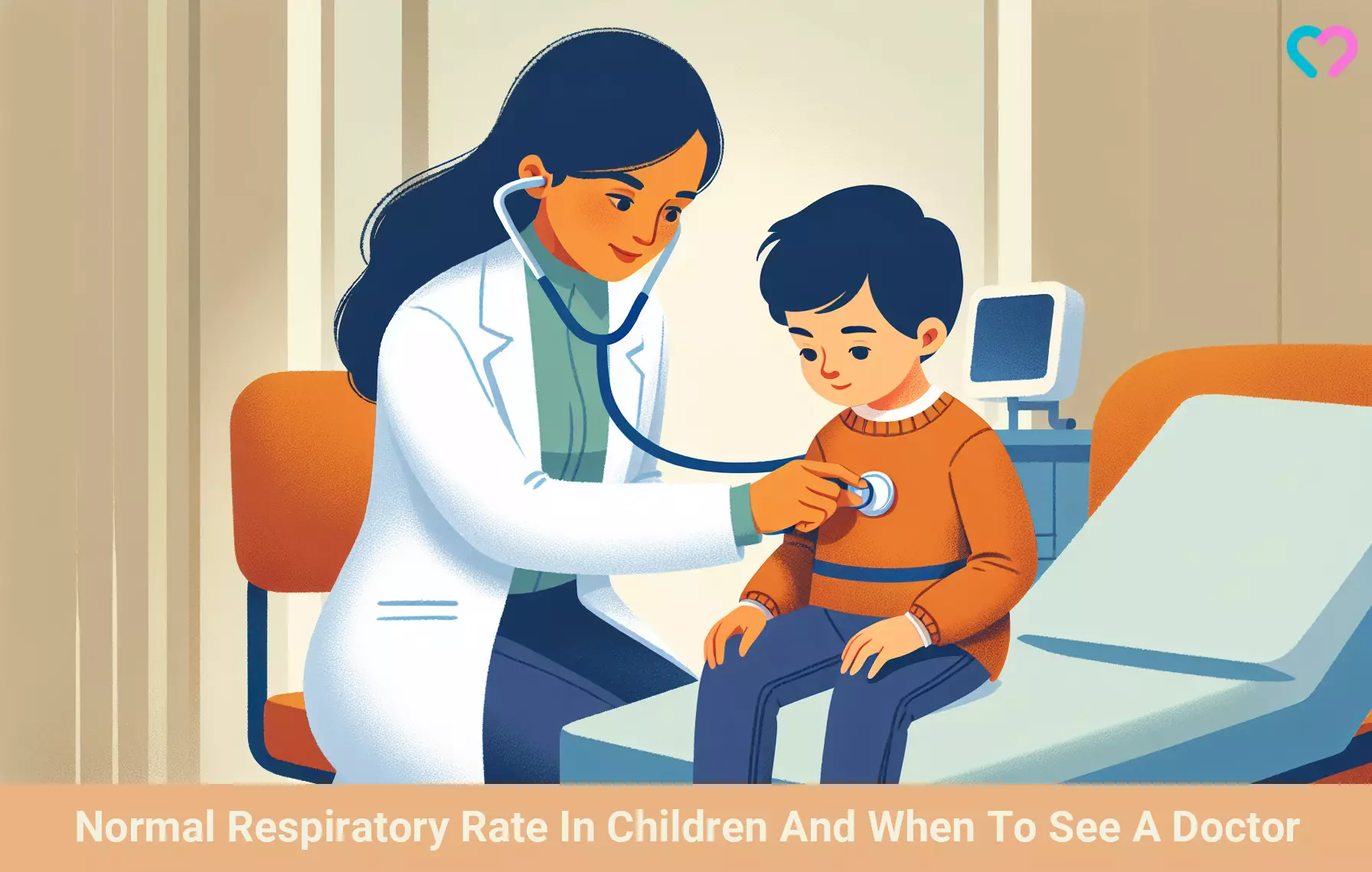
Image: Dall·E/MomJunction Design Team
Learn how to measure a child’s respiratory rate, an important vital sign for pediatric health.
Personal Experience: Source
MomJunction articles include first-hand experiences to provide you with better insights through real-life narratives. Here are the sources of personal accounts referenced in this article.
i. Asthma!
https://milton-randle.medium.com/asthma-1dfc356e9d0c
References
- Vital Signs.
https://www.hopkinsmedicine.org/health/conditions-and-diseases/vital-signs-body-temperature-pulse-rate-respiration-rate-blood-pressure - Vital Signs: Normal Respiratory Rates (PICU Chart).
https://uihc.org/childrens/educational-resources/pediatric-critical-care-reference-guide-picu-charts-picu-handbook - Vital Signs (Body Temperature, Pulse Rate, Respiration Rate, Blood Pressure).
https://www.columbiadoctors.org/treatments-conditions/vital-signs-body-temperature-pulse-rate-respiration-rate-blood-pressure - Rapid Shallow Breathing.
https://medlineplus.gov/ency/article/007198.htm - Vital Signs.
https://my.clevelandclinic.org/health/articles/10881-vital-signs - Vega R. M. and Avva U., Pediatric Dehydration.
https://www.ncbi.nlm.nih.gov/books/NBK436022/ - Fever- Children.
https://www.betterhealth.vic.gov.au/health/conditionsandtreatments/fever - Paulus. M. P., The breathing conundrum – interoceptive sensitivity and anxiety.
https://www.ncbi.nlm.nih.gov/pmc/articles/PMC3805119/ - O’Donnell F.T. and Rosen K.R., Pediatric Pain Management: A Review.
https://www.ncbi.nlm.nih.gov/pmc/articles/PMC6179554/ - Barbour S.J. et al., Increased tidal volume variability in children is a better marker of opioid-induced respiratory depression than decreased respiratory rate.
https://pubmed.ncbi.nlm.nih.gov/15562983/ - Obstructive Sleep Apnea In Children.
https://my.clevelandclinic.org/health/diseases/14312-obstructive-sleep-apnea-in-children - Koutsoukou A. et al., Respiratory mechanics in brain injury: A review.
https://www.ncbi.nlm.nih.gov/pmc/articles/PMC4733457/ - Lencu C., Respiratory manifestations in endocrine diseases.
https://www.ncbi.nlm.nih.gov/pmc/articles/PMC5111483/ - Signs Of Respiratory Distress In Children.
https://www.chop.edu/conditions-diseases/signs-respiratory-distress-children - Signs Of Breathing Problems In Children.
https://www.asthmaandlung.org.uk/symptoms-tests-treatments/symptoms/signs-in-children/problems - Breathing Problems.
https://www.stanfordchildrens.org/en/topic/default?id=breathing-problems-90-P02666 - Breathing differences between children and adults.
https://blog.christopherreeve.org/en/life-after-paralysis/breathing-differences-between-children-and-adults - Sleep Respiratory Rate.
https://www.sleepfoundation.org/sleep-apnea/sleep-respiratory-rate - Breathing Problems.
https://www.stanfordchildrens.org/en/topic/default?id=breathing-problems-90-P02666# - Vital Signs (Body Temperature Pulse Rate Respiration Rate Blood Pressure).
https://www.hopkinsmedicine.org/health/conditions-and-diseases/vital-signs-body-temperature-pulse-rate-respiration-rate-blood-pressure - Mary E Crocker et al.; (2025); Effects of high altitude on respiratory rate and oxygen saturation reference values in healthy infants and children younger than 2 years in four countries: a cross-sectional study.
https://www.thelancet.com/journals/langlo/article/PIIS2214-109X(19)30543-1/fulltext - Lung disease.
https://medlineplus.gov/ency/article/000066.htm#:~:text=Lung%20tissue%20diseases%20%2D%2D%20These - Moshe Haddad and Sandeep Sharma; (2025); Physiology, Lung.
https://www.ncbi.nlm.nih.gov/books/NBK545177/ - Best practices for preventing respiratory illnesses in children.
https://health.choc.org/best-practices-for-preventing-respiratory-illnesses-in-children/ - Amy Sarah Ginsburg et al.; (2018); A Systematic Review of Tools to Measure Respiratory Rate in Order to Identify Childhood Pneumonia.
https://www.atsjournals.org/doi/full/10.1164/rccm.201711-2233CI - Rebecca H. Bitsko et al.; (2025); Mental Health Surveillance Among Children — United States
2013–2019 - Respiratory Distress.
https://www.nationwidechildrens.org/conditions/respiratory-distress - Tachypnea.
https://my.clevelandclinic.org/health/symptoms/24124-tachypnea
Community Experiences
Join the conversation and become a part of our nurturing community! Share your stories, experiences, and insights to connect with fellow parents.
Read full bio of Dr. Neema Shrestha
- John Landry is a registered respiratory therapist (RRT) with a BS in kinesiology from The University of Memphis. He has over 6 years of experience in the field, and is the founder and CEO of Respiratory Therapy Zone.
 John Landry is a registered respiratory therapist (RRT) with a BS in kinesiology from The University of Memphis. He has over 6 years of experience in the field, and is the founder and CEO of Respiratory Therapy Zone.
John Landry is a registered respiratory therapist (RRT) with a BS in kinesiology from The University of Memphis. He has over 6 years of experience in the field, and is the founder and CEO of Respiratory Therapy Zone.
Read full bio of Sindusha MS
Read full bio of Dr. Ritika Shah
Read full bio of Dr. Joyani Das







